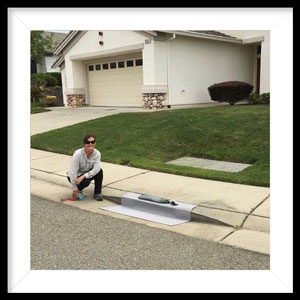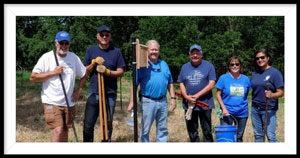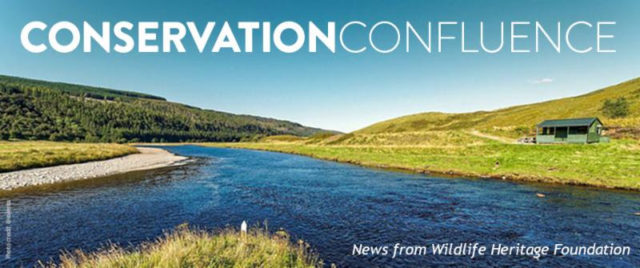Conservation Confluence May 2019
NEWS FROM WHF
What an exciting month here at WHF! Our outdoor projects connecting people to nature are in full swing, so the stories below focus on two of our community-based efforts. With the help of fantastic volunteers, we removed approximately 700 pounds of trash from Auburn Ravine Creek on May 4 th , and our Urban Bird Project at Sun City Lincoln Hills continues to grow. Please enjoy the highlights below and let us know if you want to get involved!
My best,
Darla Guenzler, Executive Director
WHF URBAN BIRD PROGRAM
 The Sun City Lincoln Hills preserves provide valuable nesting habitat for many types of birds, including ground nesters such as California quail, killdeer, and mallards. When newly hatched birds become mobile and begin moving overland with their parents, they can sometimes fall into and become trapped in nearby storm drains.
The Sun City Lincoln Hills preserves provide valuable nesting habitat for many types of birds, including ground nesters such as California quail, killdeer, and mallards. When newly hatched birds become mobile and begin moving overland with their parents, they can sometimes fall into and become trapped in nearby storm drains.
To reduce the number of trapped young birds, WHF installs over 100 custom-designed temporary covers in key locations close to our preserves and potential nesting habitat. These covers remain in place throughout the nesting season and are regularly monitored and cleaned by WHF staff. The Urban Bird Project is entering its third year and we couldn’t make it happen without donations from members of our local community. To make a donation, click here.
– Gaylene Tupen, Lead Biologist
NEW BLUEBIRD BOXES!
 WHF installed four bluebird nesting boxes at McBean Park Preserve with grant funding from Sacramento Audubon Society and volunteers from Sierra Foothill Audubon Society and Friends of Auburn Ravine. The impact of urban growth and development has affected bird populations, specifically cavity nesting dwellers like bluebirds and swallows. The installation of the new bluebird nesting boxes will help improve declining numbers by providing nesting spaces. They are also a great opportunity for the community to get outside and learn more about cavity nesting dwellers. For more information regarding this project, contact Veronica at vgriffiths@wildlifeheritage.org .
WHF installed four bluebird nesting boxes at McBean Park Preserve with grant funding from Sacramento Audubon Society and volunteers from Sierra Foothill Audubon Society and Friends of Auburn Ravine. The impact of urban growth and development has affected bird populations, specifically cavity nesting dwellers like bluebirds and swallows. The installation of the new bluebird nesting boxes will help improve declining numbers by providing nesting spaces. They are also a great opportunity for the community to get outside and learn more about cavity nesting dwellers. For more information regarding this project, contact Veronica at vgriffiths@wildlifeheritage.org .
– Veronica Griffiths, Education Coordinator

 (916) 434-2759
(916) 434-2759



